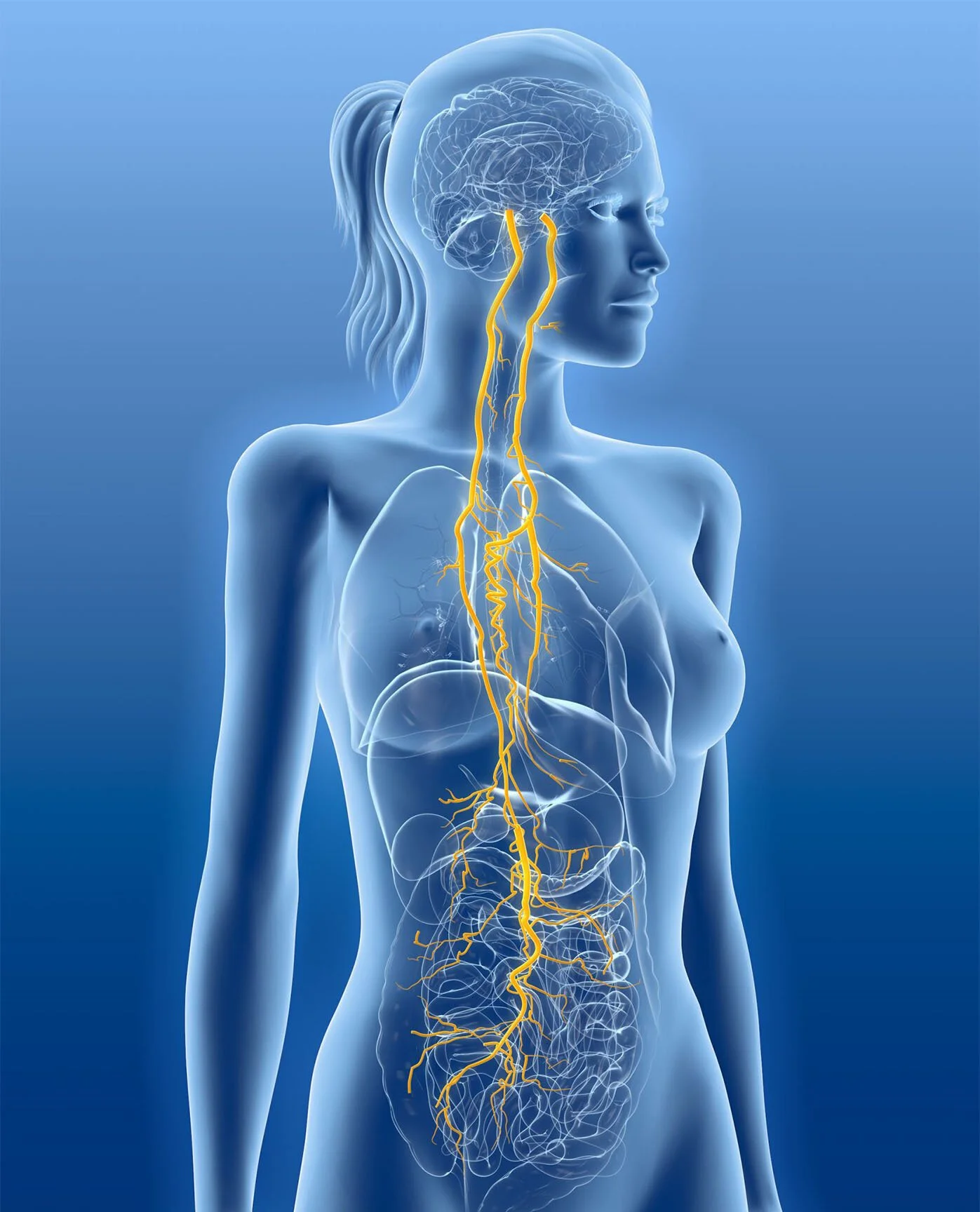Unlocking the Power of the Nervous System: A Comprehensive Guide to Polyvagal Theory
What is Polyvagal Theory and why is it important to health?
Polyvagal Theory is a concept developed by Dr. Stephen Porges in the 1990’s that provides a deeper understanding of the nervous system and its impact on our emotional and physical well-being. This theory has significant implications for trauma, mental health, and stress management.
Understanding Polyvagal Theory is essential for understanding the impact of trauma and stress on our nervous system and overall health. By learning to activate our social engagement system, we can regulate our emotions, manage stress, and improve our overall well-being.
First let’s talk about the basis of the theory which is around the Vagus nerve.
What is the Vagus nerve?
The vagus nerve is the longest nerve in the human body, extending from the brainstem down to the abdomen. It is a part of the parasympathetic nervous system, which is responsible for regulating many of the body's involuntary functions, such as heart rate, digestion, and breathing.
The vagus nerve is responsible for carrying sensory information from the organs of the body to the brain and for sending commands from the brain to the organs. It is involved in many bodily functions, including digestion, heart rate, breathing, and immune system responses.
Research has also shown that the vagus nerve is involved in regulating mood, anxiety, and stress responses. Stimulation of the vagus nerve has been used to treat various conditions, including depression and anxiety.
The way we thought it was:
Traditionally, the nervous system was thought to have two parts: the sympathetic nervous system, which initiates the fight-or-flight response, and the parasympathetic nervous system, which induces the rest-and-digest response. Polyvagal Theory suggests that our nervous system's response to stress and danger is more complex than the fight-or-flight response. In addition to the fight-or-flight response, we also have a freeze response. When we experience overwhelming stress or trauma, our nervous system can shut down, causing us to feel numb and disconnected from our bodies, dizzy or just “going through the motions”.
Polyvagal Theory suggests that there is a third, more sophisticated branch of the nervous system - the social engagement system.
The social engagement system comprises motor pathways that regulate the muscles in the face, head, heart, and lungs. These neural pathways work together to allow us to communicate through facial expressions and body language, signaling to other mammals whether we are approachable or not
The social engagement system developed as a survival mechanism during mammalian evolution, allowing for harmonious communication and non-verbal cues to promote group living. Living in groups is critical for mammalian survival, providing safety, food, and physiological co-regulation. Co-regulation involves giving and receiving cues of safety with those around us, reinforcing a sense of safety within the group.
According to Porges, being alone can be traumatic for mammals because our biological imperative is to connect and co-regulate with others. Successful social relationships that promote co-regulation are necessary for achieving a sense of safety. Our natural instinct is to seek out connections with humans and animals who make us feel secure, but when our nervous system becomes stuck in the reptilian state of immobilization, communication and connection with others can become challenging.
Reprinted from Biological Psychology (Porges SW. The polyvagal perspective. Biol Psychol 2007; 74:116–143), copyright 2007.
Trauma + the freeze response:
When we experience overwhelming stress or trauma, our nervous system can shut down, causing us to feel numb and disconnected from our bodies. This freeze response is an evolutionary adaptation that helped our ancestors survive in dangerous situations. However, when this response is activated repeatedly, it can lead to chronic stress, anxiety, and even PTSD.
One way to activate our social engagement system is through mindfulness, meditation and movement practices. These techniques allow us to develop greater awareness of our thoughts and emotions, enabling us to regulate them more effectively. Also, regular exercise, deep breathing, and spending time in nature can also help activate the social engagement system, promoting feelings of safety and security.
In my experience, Polyvagal Theory is a vital concept in the field of mental health and stress management. By understanding the role of the social engagement system in our nervous system, we can better comprehend the effects of trauma and stress on our health. Learning to activate our social engagement system through practices such as mindfulness, meditation, breathing and exercise can help us regulate our emotions and manage stress more effectively, leading to improved overall well-being.
In the following articles we will discuss the three main states of the autonomic nervous system:
Ventral vagal state: This is the state of safety and social engagement, where the vagus nerve (which runs from the brainstem to the abdomen) is highly active, and the heart rate is regulated. In this state, we feel calm, connected, and able to engage in social interactions.
Sympathetic state: This is the state of mobilization, where the body prepares for fight or flight in response to perceived danger or threat. The sympathetic nervous system becomes dominant, increasing heart rate, blood pressure, and respiratory rate.
Dorsal vagal state: This is the state of immobilization, where the body shuts down in response to extreme danger or threat. The parasympathetic nervous system becomes dominant, slowing heart rate and decreasing blood pressure, which can lead to feelings of dissociation, shutdown, or fainting.


